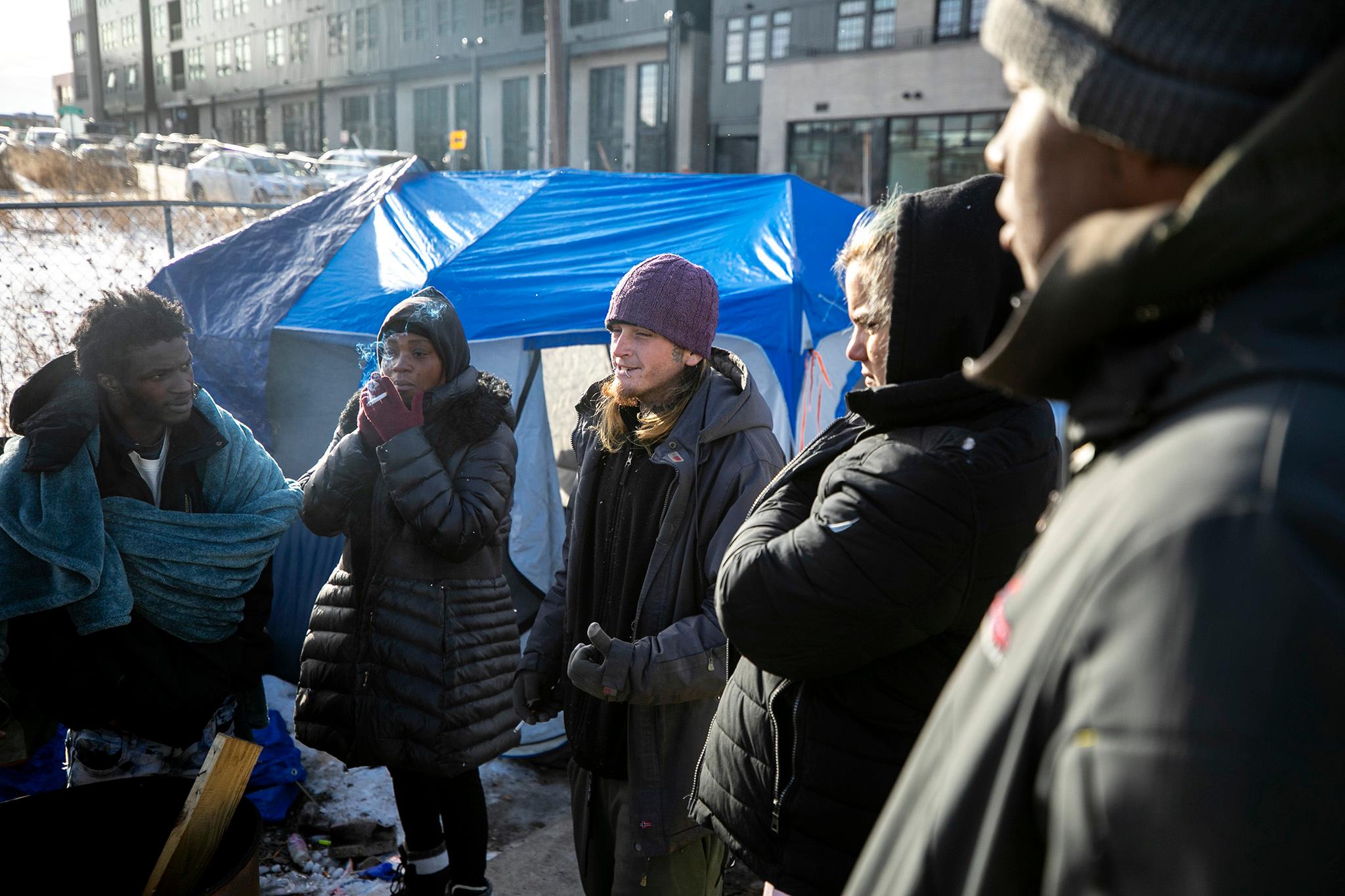The already staggering number of people accessing homelessness services in the Denver metro has risen by several thousand.
A total of 30,409 people used homelessness services from more than 100 regional providers, according to the annual "State of Homelessness Report" released this week by the Denver Metro Homeless Initiative.
The new report is based on several sources including information from the Homelessness Management Information System, a regional database that tracks homelessness and service provider information in Adams, Arapahoe, Boulder, Broomfield, Denver, Douglas, and Jefferson counties. The HMIS tracks service use between July 1, 2022 to June 30, 2023.
Additionally, Denver area public school districts identified 9,820 students experiencing homelessness in the 2021 and 2022 school year, according to the report.
In the annual Point-In-Time count, the Metro Denver Homeless Initiative found 9,065 people experiencing homelessness, in and out of shelters, on Jan. 30, 2023. That number "does not include people staying with friends, families or in a motel," according to the report.
The 2023 report does not reflect the latest efforts of Mayor Mike Johnston, who spent his first six months in office sheltering more than 1,000 people and who plans to continue to act aggressively to end homelessness.
It also only partially reflects a year that saw record-high eviction filings in Denver County and the arrival of tens of thousands of migrants, many of whom are living in the metro without a home.
The report also looks at why people are becoming homeless and rejects the idea that there is a single cause.
There are more men that women accessing services.
An overrepresentation of people who identify as Black, multiracial, American Indian or Alaskan Native and Native Hawaiian or Pacific Islanders live without homes.
"These disparities are not the result of personal failures," the report states. "They stem from centuries of systemic racism and inequities that directly cause homelessness and perpetuate generational trauma."
When asked how they became homeless, people who responded to the study were allowed to select multiple options and often did.
Relationship problems, family breakups and abuse or violence at home added together were involved in 51% of the cases, according to HMIS data.
Low wages, a high cost of living and a lack of affordable housing have an outsized effect on the homelessness crisis, according to the report.
Economic issues are contributing factors in more people's homelessness than family strife. Added together, an inability to pay rent or mortgage, lost jobs, an inability to find work and either formal or informal evictions contributed to homelessness for 81% of people.
"Our largest data source shows that the leading cause or contributing factor of homelessness is relationship problems or family breakups," the report states. "When coupled with rising rents and low wages, it becomes increasingly difficult for people to secure stable housing in one of the most expensive metro areas in the country. Lack of support, domestic violence, employment challenges, and issues with mental health or substance use also contribute."
The report makes a case for busting some common myths about homelessness.
Homelessness is primarily a housing affordability issue, according to the report, and while drugs and mental illness can be contributing factors, they are rarely the sole factors.
Homelessness, the report states, is also not an individual choice in the vast majority of cases. According to the HMIS Data, just 6% of people chose to live without a home. For the other 94%, they were forced into the situation.
The report states people are not moving to Colorado and immediately becoming homeless. The majority of people who are living here unhoused were living here with housing first.
"While there has been a perception in our community since the legalization of cannabis that people experiencing homelessness have moved to Colorado from other states, our HMIS data indicates otherwise: the vast majority of respondents (88%) were previously housed in Colorado prior to experiencing homelessness. We must uproot these beliefs that promote Nativism and the otherization of people experiencing homelessness."
Johnston, who has pledged to end homelessness in Denver during his first term, says he will build or find 3,000 new units of income-restricted housing per year, a small fraction of the 60,000-some needed units.
At a recent Colorado Apartment Association press conference, industry leaders said they think the next big trend in development will be workforce housing rather than the luxury product that has been created in recent years.
Cole Chandler, Mayor Johnston's senior advisor on homelessness, told Denverite the administration believes it has closed the majority of large encampments in the city center.
Assessing just what percentage of people living on the streets found shelter during Johnston's first six months is difficult, since the accounting of how many people are experiencing homelessness is not done in real time.
But some relevant data will be coming in the months ahead. The Metro Denver Homeless Initiative will run its annual Point-In-Time count come Jan. 23, but the data showing how many people were living in both sheltered and unsheltered forms of homelessness won't be available for months.
For now, the administration plans to expand its efforts to shutter encampments beyond those in the city center.
"There are other camps around town, and I think part of what we do with the encampment-focused effort in 2024 is help broaden the geography of that," Chandler said.














